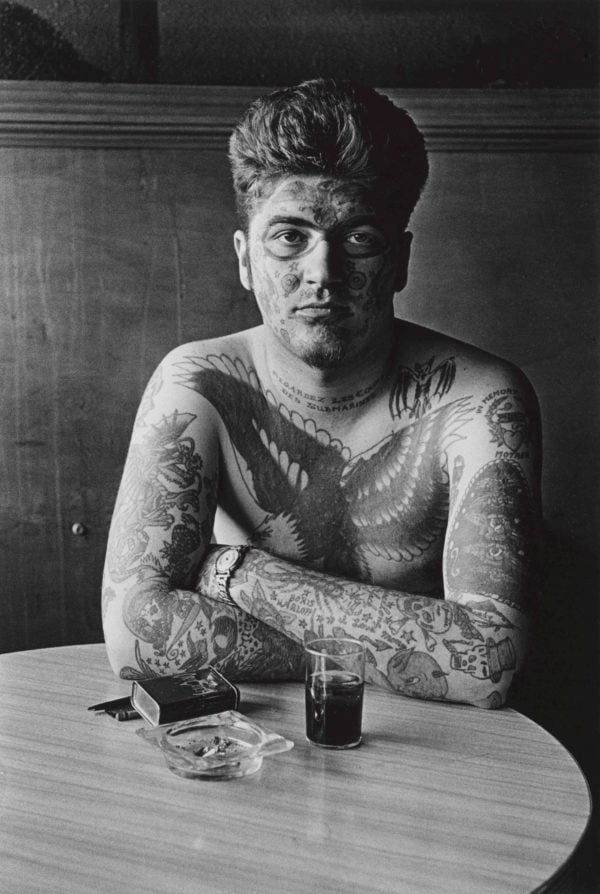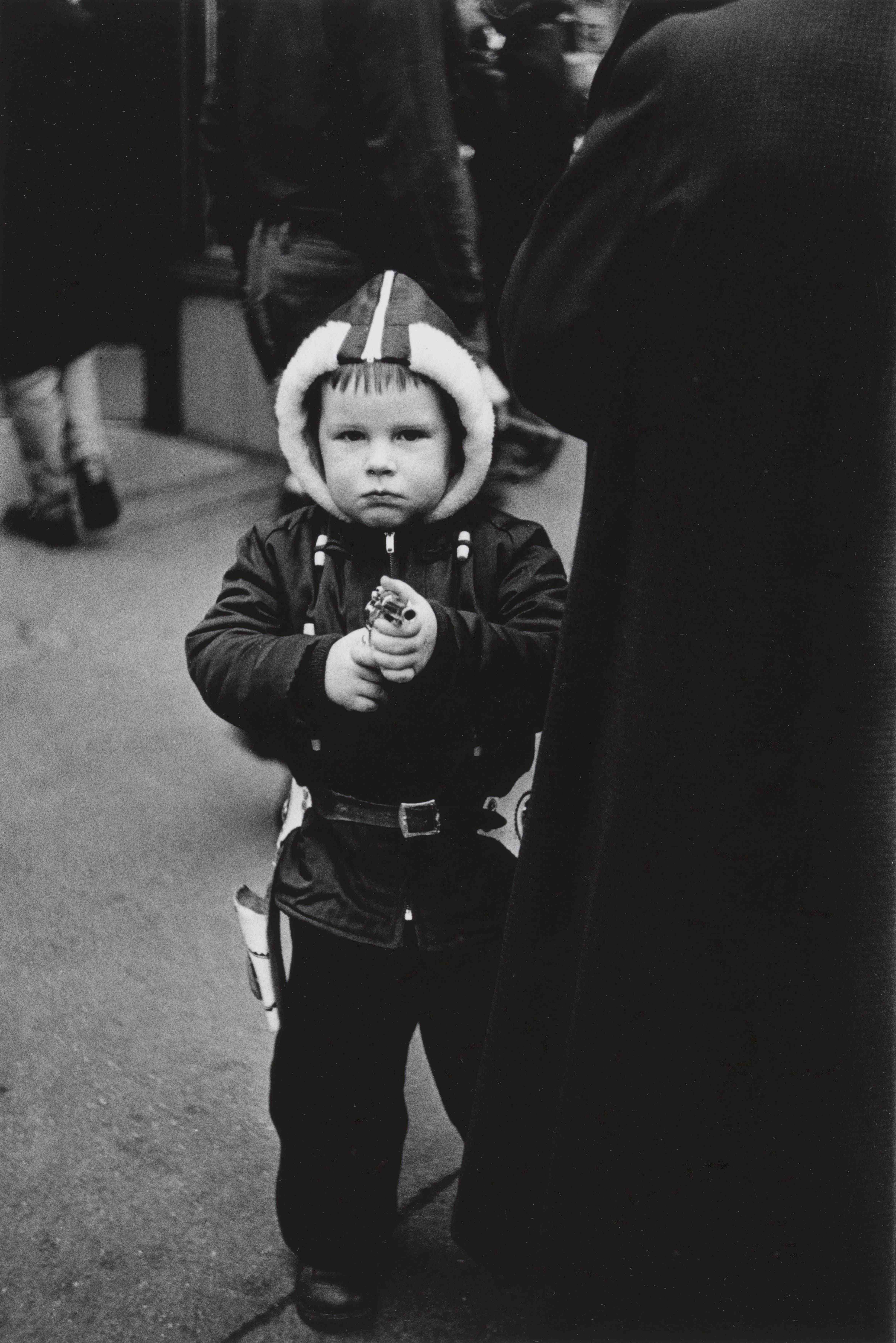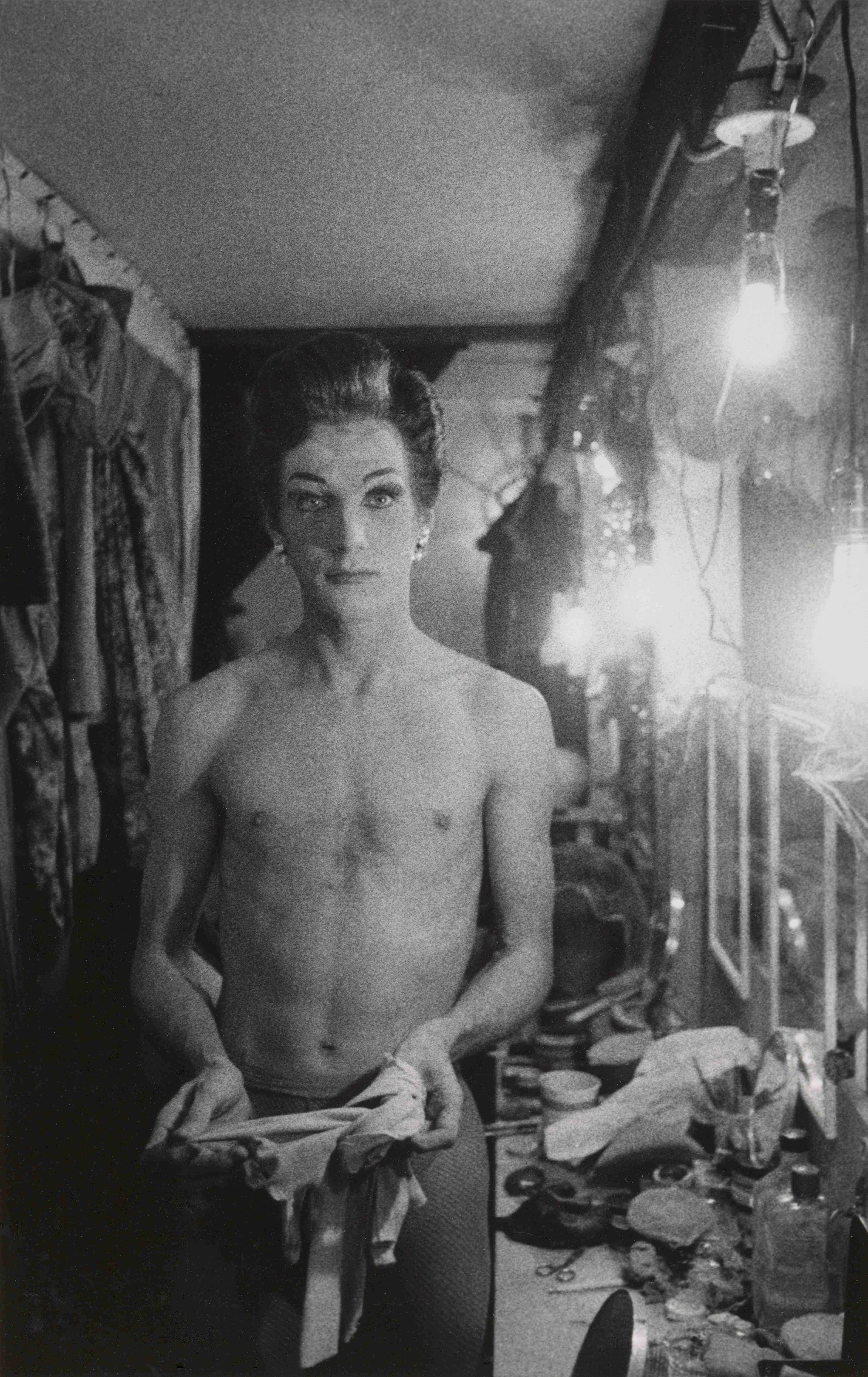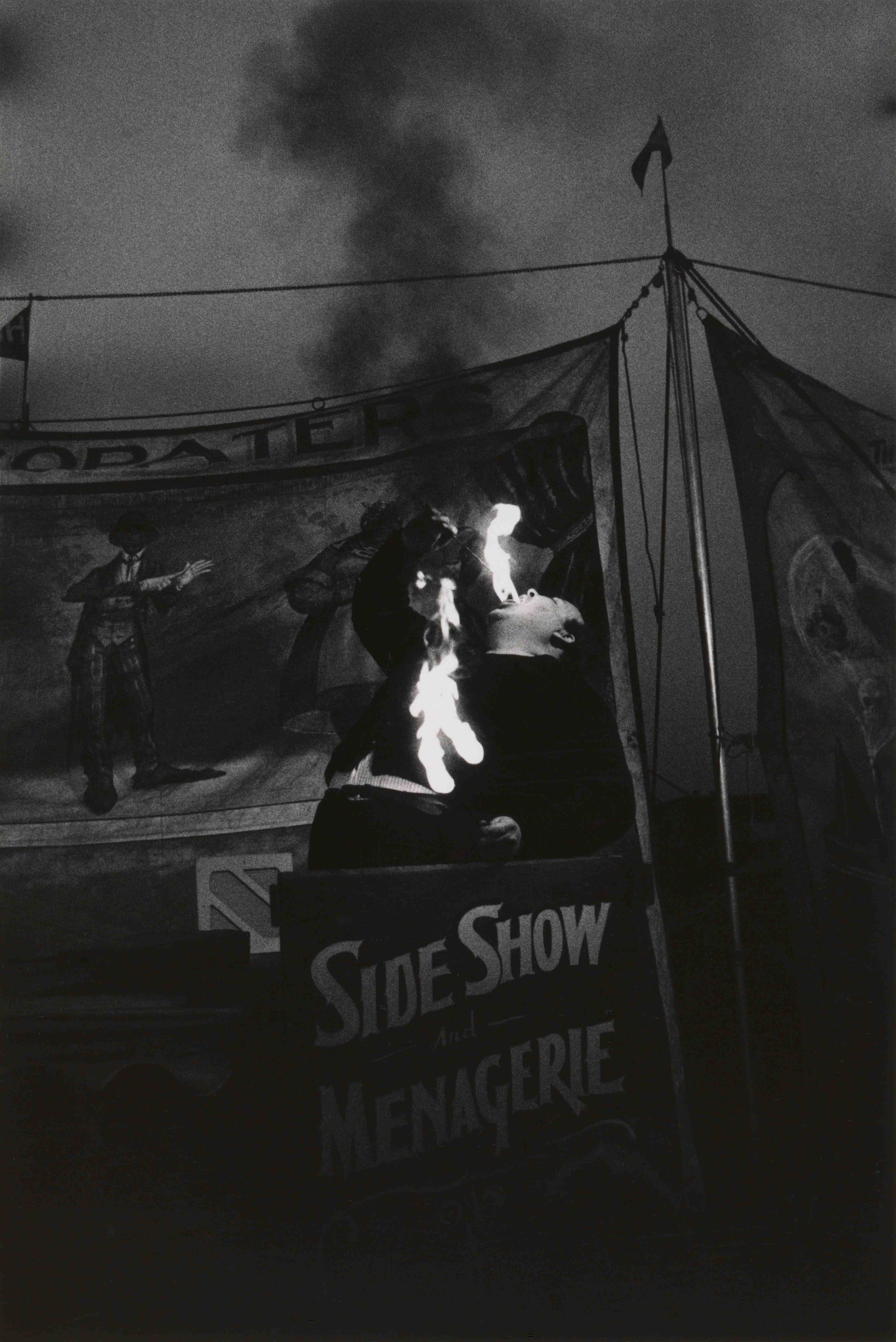Opinion
Run, Don’t Walk, to See Diane Arbus’s Pictures at the Met Breuer
It's the first blockbuster show of the summer

It's the first blockbuster show of the summer

Christian Viveros-Fauné

Here’s a random quote to kick off today’s round of “Guess Who Wrote It?”—“Crime; despair; sin; madness; death; fame; wealth; innocence.” If forced to hazard a guess about the author of this weird shopping list, one might naturally say Baudelaire, and be right in spirit. The correct answer, though, is the then 36-year-old Diane Arbus. The anno was 1959—the end of the vanilla-frosted Eisenhower era—a decade in which the famous photographer’s notebook bore witness to her recurrent obsessions, and in which the puckish artist sprung her freakishly visionary career on an unsuspecting public.
That astounding journey began in earnest in 1956 when Arbus, who had been previously styling ho-hum fashion photographs for her husband Allan, enrolled in a photography class with the Austrian émigré artist Lisette Model. Model’s advice to Arbus was both enigmatic and succinct. “The camera is an instrument of detection,” she counseled. And again: “Don’t shoot until the subject hits you in the pit of the stomach.”
The younger photographer practically tattooed these lessons onto her ventricles. In the words of Patricia Bosworth—the ex-Arbus fashion model who became the artist’s first biographer—her daredevil camera work henceforth exemplified the idea that “the best photographs are often subversive, unreasonable, delirious.”

Diane Arbus. Kid in a hooded jacket aiming a gun, N.Y.C. 1957 ©The Estate of Diane Arbus, LLC. All rights reserved.
Showcased in a long-awaited display, Arbus’s first strides as an artist are currently on view in a dazzling—if bizarrely installed—exhibition at the work-in-progress museum that is the Met Breuer. Titled timidly “in the beginning,” this lowercase exhibition focuses on a decidedly uppercase period in Arbus’s life—the first seven years of her career, from 1956 to 1962. This was the era in which Arbus developed her now legendary confrontational style and cunning private-eye approach to picture making. As evidenced in more than one hundred gelatin silver prints arrayed around the second floor of Marcel Breuer’s concrete bunker, these are precisely the developments that have brought the photographer so much worldwide praise, criticism, and imitation.
The majority of the images featured in the Met Breuer exhibition have never been seen before. On first inspection, though, they nearly wolf whistle Arbus’s name. Part of the Met’s Diane Arbus Archive—acquired in 2007 as a gift from the artist’s daughters, Doon Arbus and Amy Arbus—they were mostly taken with a 35-millimeter camera, which is what the photographer used before adopting a square format Rolliflex machine. After the artist’s death, the majority of the prints were stored for several decades in cardboard boxes (the boxes themselves, printed with the logo of “Dupont Photo Products,” are on view in a nearby alcove, on the way to the bathroom). Once the Met received them—along with other material in the Arbus archive, like negatives, notebooks, datebooks and correspondence—the idea of the present exhibition began to take shape.
Conceived as a prequel to the photographer’s posthumous and eponymously titled 1972 Museum of Modern Art retrospective—Arbus committed suicide on July 26, 1971, the same day the Apollo 15 astronauts were shot to the moon—the current exhibition presents a Star Wars-type chronology. Essentially, it argues that the artist’s first solo museum show is really chapter two of a larger corpus. As helmed by chief photography curator Jeff Rosenheim, the Met has profiled its “in the beginning” as the fundamental antecedent to all previous Arbus museum outings (other major exhibitions include the San Francisco Museum of Art’s show “Diane Arbus: Revelations,” which traveled the U.S. from 2003 to 2006, and the Jeu de Paume’s “Diane Arbus” in 2011). The early work—the museum’s logic ventures—becomes the essential first entry, therefore, in understanding Arbus’s massively influential oeuvre.

Diane Arbus. Female impersonator holding long gloves, Hempstead, L.I. 1959 ©The Estate of Diane Arbus, LLC. All rights reserved.
Besides formulating the scholarly lineaments of a genesis story, the Met Breuer’s Arbus show also provides the goods. Origamied within its complicated envelope is a largely unseen visual record of the artist’s intensely collusive photography. The exhibition charts an artistic evolution that is not unlike a Porsche Spyder’s acceleration: Arbus goes from zero to sixty in just a few prints. Because her photos consistently read like picture-book confessions—and because we marvel at some of her better-known acolytes like Nan Goldin and Cindy Sherman—it also becomes important to clock a watershed event. Between 1956 and 1962, Diane Arbus laid waste to the myth of detached documentary photography.
Together, Arbus’s modest-sized pictures constitute the summer’s must-see blockbuster exhibition. This despite a heavy-handed piece of show design that would make even the crew responsible for the Guggenheim’s “The Art of the Motorcycle” blush. Hung on eight rows of forty-seven separate 42-inch by 12-foot “columns” rather than on continuous walls, the Met’s exhibition schema approximates the kind of trade booth experience familiar to exhausted art fair goers. At the opening, people stopping to say hello in the show’s narrow passageways created bottlenecks that resembled traffic on the Cross Bronx Expressway. Put simply, sardines have had it better—if you consider Swedish product design.
But almost nothing can diminish the sheer adventure of experiencing Arbus’s modest-sized prints—years after being taken, her images comprise a devilishly original worldview. Individually, her black and white photos of female impersonators and feral children stare out with a candor that is no less real for having been candidly coaxed (Arbus always openly admitted to engaging rather than detaching from her subjects). As a group, her grainy portraits (and they are mostly portraits) speak to the seesaw battle waged by those on either side of the camera—the existential struggle between seeing and being seen—but also of this particular photographer’s innate sensibility.

Diane Arbus. Fire Eater at a carnival, Palisades Park, N.J. 1957 ©The Estate of Diane Arbus, LLC. All rights reserved.
That sensibility, part choleric-melancholic poet and part urban anthropologist, is profoundly present in the twin blazes that frame her action photo of a carnival fire eater in Palisades Park. It is also front and center in the seemingly artless portrait of tattoo artist Jack Dracula, taken at a time when New York City outlawed ink parlors, because of repeated hepatitis outbreaks. To borrow a quote from the Beatles, Arbus treated her subjects (and probably they her) with walrus-like empathy: “I am he as you are he as you are me and we are all together.” The fact that she was often cruel (to be kind) in her portrayals guaranteed that she saw them exactly as she visualized herself: flawed, different, painfully unique.
Ultimately, what Arbus wrought, starting in 1956, was the reinvention of a 130-year old machine. In her hands, the photographic camera—once considered the exclusive barometer of objective reality—became expressive. Her first explosive results are now on view: At the Met Breuer her photos go off like cluster bombs.
artnet Auctions is offering a selection of the prolific photographer’s work in tandem with the Met Breuer show, which is live now until August 4, 2016.